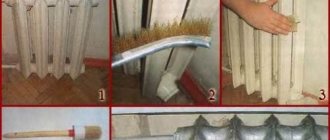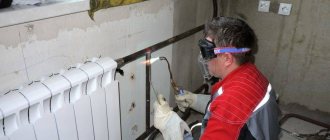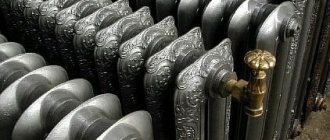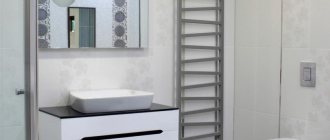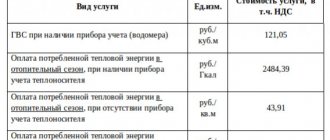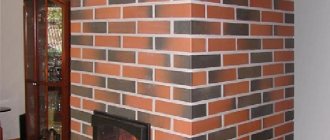Peeling paint on heating radiators significantly spoils the aesthetic appearance of both the heating system itself and the entire room. In addition, when carrying out painting work, before applying new enamel to the battery, the old one must be removed. Before removing paint from batteries, they must be thoroughly cleaned of dust. At the next stage, the radiators must be primed, and then, carefully, evenly apply new enamel to their surface in an even layer.
Most people (more than 40%) use radiators made of cast iron as their heating system. As a rule, they act as the main element of decor in a room, emphasizing the antique interior and design of the room. However, in some cases, replacing or removing cast iron radiators is not possible due to the nature of the heating system, which does not allow for its updating.
On a note! Before carrying out work related to removing outdated layers of paint from batteries, first of all, their surface must be cleaned of accumulated debris and dust. For these purposes, use an ordinary damp cloth or vacuum cleaner. If the paint is not flaking or flaking, you can use sandpaper to clean the battery.
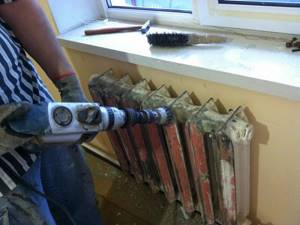
Tools and tools
Before painting batteries and applying a new layer of paint to their surface, the previous layer must be properly removed. To do this you will need to acquire tools such as:
- Metal brush.
- Coarse sandpaper.
- Sanding attachments.
- An electric drill or angle grinder (angle grinder), preferably with a wheel diameter of no more than 150 mm.
Don't forget about safety precautions. When carrying out work to remove paint and varnish from the surface of radiators, it is recommended to use protective, durable glasses, rubberized gloves, and a respirator. To quickly remove enamel, as an alternative to metal brushes and sandpaper, you can use special chemicals. For example, Veslee 520 ml old paint remover is excellent for these purposes. Chemicals are preferably used to remove paint in hard-to-reach areas of radiators. For example, they are excellent for cleaning the surfaces of ribs.
Advice! When using chemical reagents to remove outdated enamel, it is recommended to use a respirator and ensure proper ventilation of the indoor air. In addition, before applying a chemical reagent to the surface, it must be cleaned with warm water and then dried.
General recommendations
Removing paint from a heating battery in any way is made easier by the following general tips:

The chemical remover must be kept in its original container throughout all work.- Rubber joints should not be treated with chemical compounds.
- Mechanical processing should be carried out in conditions of good air circulation.
- Before carrying out mechanical treatment, it is forbidden to apply a remover.
- If the product is covered with three or more layers of paint, then the chemical method is not advisable. It is better to use a mechanical or thermal method to remove the coating.
- When using chemical compounds, protection with a respirator, fabric and rubber gloves, and sealed goggles is required. The room should be well ventilated.
It is better to remove old coating in a hard-to-reach place using a wooden strip with medium-grain sandpaper. This will allow you to process the transverse ribs of the heating battery.
Preparing for cleaning
It is preferable to carry out work to remove outdated enamel immediately before starting renovation work indoors, when preliminary preparatory work on the floors and walls has already been carried out. To carry out this removal procedure, you will need a spatula made of metal, a hard brush, and a simple rag.
Important! If cleaning of radiators is carried out after completion of repair work indoors, then in this case, the workplace where paint is removed must be properly insulated. To do this, you can use high-density paper or film.
It is preferable to remove paint and varnish material from removed radiators outdoors. However, this is not always possible. Regardless of the chosen cleaning method, mechanical or chemical, during work it is necessary to use rubberized or thick fabric gloves, a respirator, and safety glasses.
Enamel removal work must be carried out with the heating system turned off. Mechanical cleaning involves the use of abrasive agents, such as sandpaper. Liquid remover can be used for removal in hard-to-reach areas of the radiator, such as on the fins. However, it is not recommended to use the remover at the joints of battery sections where there are gaskets made of rubber.

Recommendations for removing paint by any method
- All cleaning and painting procedures are carried out after turning off the heating. Doing a wash on a hot radiator is not only pointless, but also dangerous, especially when working with chemical solutions.
- The liquid remover must be kept in its original container throughout its entire use. If, however, another container was used, then it will be unsuitable for further use in everyday life.
- At the junction of battery sections there are rubber gaskets that are best not treated with solvents. If they are damaged, the radiator will begin to leak.
- Mechanical cleaning is the dustiest, and if it is carried out indoors, it is necessary to ensure maximum air circulation by opening windows and closing doorways leading to other rooms.
- Before removing old paint mechanically, it is highly recommended not to apply strippers.
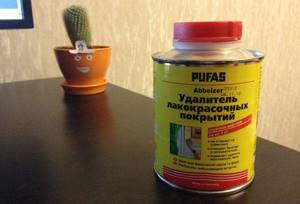
Methods for removing old paint and a review of popular removers
How to remove old paint from a radiator? There are many proven methods that can effectively remove the outdated layer of paint from heating system radiators. The most effective and most common of them are the following methods:
- mechanical;
- chemical;
- thermal.
Each of the listed methods has its own specific advantages and some disadvantages. For example, the chemical method allows you to remove paints or water-based compounds from hard-to-reach places. It involves the use of such removal products as Maximum, Kompozit, Abro PR – 600 Paint Remover. A good product for removing enamel is a substance called Khimrezerv, body.
Removing old paint using an aerosol
Aerosols are chemical agents that allow you to remove outdated paint even in hard-to-reach areas of products. This paint removal method, which involves the use of chemicals made in the form of aerosols, is best used to remove, remove, and clean enamel on radiators or to remove the paint from radiators that were made of cast iron.
Important! Before using aerosols, it is necessary to remove objects made of plastic or rubber from the working surface on which it will be applied. To prevent aerosol from getting on the floor, it must be covered with film or very thick paper.
To remove the outdated layer of enamel, you need to take an aerosol and spray it on the surface of the battery. As a rule, in order to treat the radiator (external and external parts), you will need no more than one can of aerosol. After applying the product, after about 15-30 minutes, the old finishing layer will gradually begin to become covered with bubbles. It is worth noting that
the rate of reaction will directly depend on the temperature of the air inside the room.
Then, when the old enamel begins to peel off, it can be removed from the surface of the battery. For these purposes, you can use an ordinary metal brush. If it was not possible to completely remove the paint, then this procedure must be repeated again 2-3 hours after the first attempt.
Chemical remover
To remove enamel from radiators, you can also use special chemical removers, which are available in a large assortment in many hardware stores. The most common and effective option is to use a gel remover. Such chemicals contain special components that can destroy the layer of any cladding (paint or varnish).
The procedure for removing paint from batteries using chemical removers is carried out using a brush. However, this method has a big drawback. Washing these chemicals off the inside of batteries can be very difficult. When working with chemical removers, you should follow safety rules. These substances must be stored in the special container in which they are sold. It is not recommended to pour them into another container.
To clean radiators using chemical removers, you need to take a brush and dip it in the solution. Then, using broad strokes, the surface of the batteries should be treated with this solution. The duration of action of chemical removers, depending on the product used and the condition of the surface being treated, is no more than 5-15 minutes. Therefore, before the remover applied to the heating radiator has had time to dry, using a spatula or a metal brush, you need to remove the old layer of enamel. After work, the radiators must be thoroughly washed with soapy water and then dried.
How to clean cast iron and other radiators?
Cast iron radiators are the most unpretentious in choosing a method for removing old paint. For work, you can use all types of processing.
The joints of the heating battery sections are connected using rubber gaskets, which should not be cleaned with chemicals. Otherwise, the rubber will be damaged, causing the battery to leak.
Old enamel is removed from an aluminum product using special neutral removers . They are applied for 15 minutes. Then the coating is easily removed with a spatula. It is not recommended to use mechanical processing for aluminum radiators to prevent scratches.
Removing the coating from bimetal requires care, since the product consists of aluminum and steel parts. To prevent deterioration of the appearance, it is preferable to use chemical removers and avoid serious mechanical impact.
Thermal and mechanical cleaning method
The thermal cleaning method involves using high temperatures to remove old enamel from the surface of batteries. To do this, a jet of hot air is used, which can be obtained using a special construction hair dryer. When heated, the old coating will begin to peel off from the metal surface. To completely remove it, use a spatula or metal brush.
Advice! If several layers of paint are applied to the radiator, then in this case, instead of a hairdryer, it is preferable to use a blowtorch. However, when using such a lamp, combustion products that are dangerous to humans are released. Therefore, when using it. Work must be carried out outdoors.
The simplest in terms of execution, but at the same time the most labor-intensive and time-consuming, is the mechanical method of removing the old layer of enamel. The disadvantage of this method is that when using it it is very problematic to clean hard-to-reach places on the radiator.
The essence of the mechanical cleaning method is to use a variety of tools (spatulas, brushes, angle grinders, drills) to remove the outdated layer of enamel. This method also involves the use of coarse sandpaper.
Features of the work and choice of paint
Before painting batteries, remove the old layer from them using a brush or chemical remover.
During painting of radiators, the old coating is removed, the surface is prepared and the subsequent application of a new layer. The following paint and varnish compositions are most often used for processing:
- Acrylic based. Such paints do not have a strong odor, are easy to apply, and retain their brightness for a long time. To obtain the required shade, pigment is added to the base.
- Alkyd paints. The finished coating is more durable, but may turn yellow if the batteries are painted white or a light shade.
- Based on heat-resistant varnish. Such paints are relatively inexpensive and resistant to strong temperature changes.
- Silicone compounds. They cover the radiators themselves and metal heating pipes.
Acrylic compounds can withstand a maximum temperature of +80 degrees Celsius.
Basic Safety Precautions
When carrying out work to clean the old paint layer from the surface of radiators, simple safety precautions must be observed. Regardless of the method for removing the outdated layer of enamel, all work must be carried out after wearing protective clothing and protecting the eyes and respiratory organs with goggles and a respirator.
On a note! The most dangerous to human health is chemical cleaning. When using chemicals, you must follow safety regulations for working with them. After all, such substances are caustic and toxic. Therefore, when working with them, you need to thoroughly ventilate the room and prevent them from coming into contact with the surface of the skin, use a respirator and wear gloves.
How to remove paint in hard-to-reach places
It is best to get rid of old paintwork in hard-to-reach places mechanically. To remove paint, you need to prepare medium-grit sandpaper and a wooden strip. The thickness of the rail, together with the sandpaper stretched over it, should allow it to pass between the transverse fins of the radiator.
If a chemical is used to remove paint at home, cleaning will have to be done with a narrow spatula.
Battery painting
To paint heating radiators, use brushes, a roller or a spray gun.
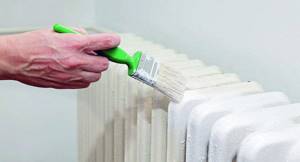
You need to proceed as follows:
- Mix the paint thoroughly.
- Then pour it into a small cuvette or other container.
- If necessary, the coloring composition is diluted with a solvent of the desired brand. This point is especially important when working with a spray gun, when a more liquid consistency is required.
- When using alkyd enamels and heat-resistant varnishes, white spirit, nefras are used, and acrylic compositions are diluted with plain water.
The roller or brush is dipped into the paint and they begin to paint the radiator from top to bottom in two layers.
Maintenance and Repair of the Expansion Tank
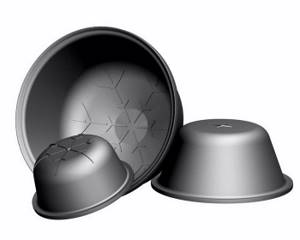
Expansion tank maintenance:
- Once every six months, check external damage for corrosion, dents and leaks. If external damage is detected, it is necessary to establish and eliminate the cause of its occurrence.
- Once every six months, check the initial pressure of the gas space Pg to ensure compliance with the calculated value. You can calculate the initial pressure of the gas space in the Calculations section of the website.
- Once every six months, check the integrity of the membrane and, if a violation is detected, replace it (if it is replaceable).
- If the expansion tank is not used for a long time, it must be stored in a dry room, after draining all the water from it.
Checking the initial pressure of the gas space in the expansion tank. To check the initial pressure of the gas space, you need to disconnect the tank from the heating system, drain water from it and connect a pressure gauge to the nipple of the gas space. If the pressure is lower than that set during setup, the tank should be inflated through the same nipple using a compressor (possibly a car one).
Checking membrane integrity . If, when checking the pressure of the gas space after draining the water, air flows through the drain valve, and the pressure in the gas space drops to atmospheric pressure, the membrane is broken.
Possible malfunctions of the expansion tank
Malfunction
The right choice of coloring composition
Before you clean the batteries from paint, you need to go to a building materials store and buy a new paint composition there.
To paint heating appliances, it is necessary to choose heat-resistant paints, the basis for which can be:
- Acrylic . Water-based compositions, which include acrylic polymer, remain as bright and odorless for a long time. They can be given any shade you like by adding the appropriate pigment to the base enamel. Acrylic paint intended for application to the surface of batteries is designed for heating temperatures not exceeding 80 ºС.
- Alcides . The basis for such coloring compositions are organic solvents. The result is coatings that are stronger than acrylic ones. If you need to paint the radiator white or light color, it is better not to use alkyd enamel, since the surface of the devices will quickly turn yellow. Alkyd-based compositions can be used to paint batteries, but only in dark shades.
- Heat-resistant varnish . Aluminum or bronze powder is added to it.
- Silicone resin.

In order to give old cast iron radiators a more aesthetic appearance, two-component compositions are used. In them, heat-resistant varnish is mixed with powder, the color of which can be matched to silver, gold or bronze. Their cost is low, but at the same time they are well applied to devices and are durable.
Silicone coatings have similar properties, but such enamels are expensive. The process of applying them is simple, since they are sold in aerosol cans. Silicone-based compounds are sold in a wide range of colors.
When choosing a coating, first of all, take into account its thermal resistance.
Methods for removing paint from a battery
There are three main methods for removing paint from cast iron radiators: chemical, thermal and mechanical.
Each of them has its own advantages and disadvantages. Before choosing one of them, you need to carefully familiarize yourself with the features of each.
Chemical methods
In specialized stores you can purchase chemicals in the form of gels or aerosols. They do an excellent job of removing coatings, but are not always safe for others.
The most common are gels. They contain components whose action is aimed at destroying the enamel layer. For example, “B-52”, “Bosny”, “Syntilor”, etc. Using gel formulations is very simple. Using a brush, apply the product to the surface in broad strokes. Leave it for about 10-15 minutes. Additional time may be required if there are several layers of paint on the radiator. From the contact of chemistry and enamel, the latter itself begins to move away from the metal. It is removed using a spatula or brush
It is important to carry out all manipulations as quickly as possible and prevent the product from drying out.
This method has one significant drawback. It is quite difficult to reach the internal parts of the device with gel and it is also problematic to wash it off later.
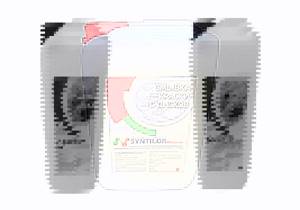
Syntilor – battery paint remover
During work, you need to ensure that the material is only in its original container. It is designed specifically for chemical compounds and is not destroyed by their aggressive effects.
After using the gels, the surface of the battery is thoroughly washed and dried. If everything is done in accordance with the instructions for use, there will be no traces of old paint left on the product.
Spray cleaners are great for cleaning the inside of a radiator. They can easily handle any type of paint without harming the metal. This type of product must be used taking into account the following safety rules:
- cleaning is carried out in a room with good ventilation or with open windows;
- aerosol products can get onto nearby surfaces, so furniture, floors and walls need to be protected;
- work in rubber gloves and other protective equipment.
The average spray consumption is one can per battery. The scheme for using the product is as follows:
- a remover is sprayed onto the surface of the radiator;
- after 20-30 minutes the paint will begin to swell;
- Using a spatula, remove the coating from the cast iron surface.
If you cannot completely get rid of the enamel the first time, the procedure can be repeated after 2 hours. After treatment, the battery is washed with soapy water and left to dry.
Chemicals do not always cope with paint applied in three or more layers. In this case, you need to use other methods of removing the coating.
Thermal
The thermal treatment method is based on the use of a hair dryer or blowtorch. With their help, the paint heats up and easily comes off the surface. Coating particles are removed with a spatula or wire brush.
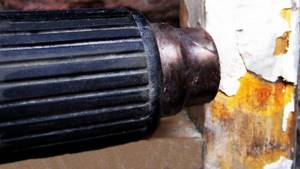
Thermal method for removing paint from batteries
A hairdryer will not be able to cope with several layers of enamel and you will have to use a blowtorch. It will quickly heat the old material to boiling point, and it will move away from the metal on its own. The disadvantage of this method is that hazardous substances will be released during operation. Therefore, the procedure must be carried out in a well-ventilated area and in protective equipment.
Mechanical
The mechanical method is more labor-intensive than the thermal and chemical methods. But its advantage is the absence of harmful agents. For work, use a drill with a special brush attachment, coarse sandpaper, spatulas, a drill, etc. With some effort, you can remove old paint from radiators that have even been painted in several layers.
You can combine several methods, for example, thermal and mechanical. That is, the enamel is first heated over the entire surface, and then removed with the selected tool. Large detachments are removed using a drill with a special attachment - a metal brush.
You can clean old radiators with a grinder and brush. The first is successfully replaced by a grinding machine with an abrasive wheel.
Remains of the coating are removed with sandpaper, a sharp spatula, a metal brush or a file. You must be careful at the joints with rubberized gaskets and not damage them.
Mechanical removal of old coating
The mechanical method of cleaning a heating structure from the old finish is considered the most labor-intensive, but also effective. Any hand or power tool will help. The most convenient one is an angle grinder, or grinder in other words. Instead of a disk, a wire brush is attached to it - a brush. You can replace the grinder with a screwdriver, drill or other strongly rotating tool. You will have to make an effort to carry out manual mechanical processing and get rid of dust, because there will be a lot of it, but after a couple of hours there will be no trace left of the old coating.
It is not always necessary to completely remove old paint from the heating system; sometimes it is enough to remove obvious “rags” with a spatula and sand them with sandpaper. It is impossible to achieve ideal smoothness of cast iron batteries; to do this, the surface must be well primed. Therefore, before choosing a cleaning method, you need to decide whether it will be carried out completely or partially.

